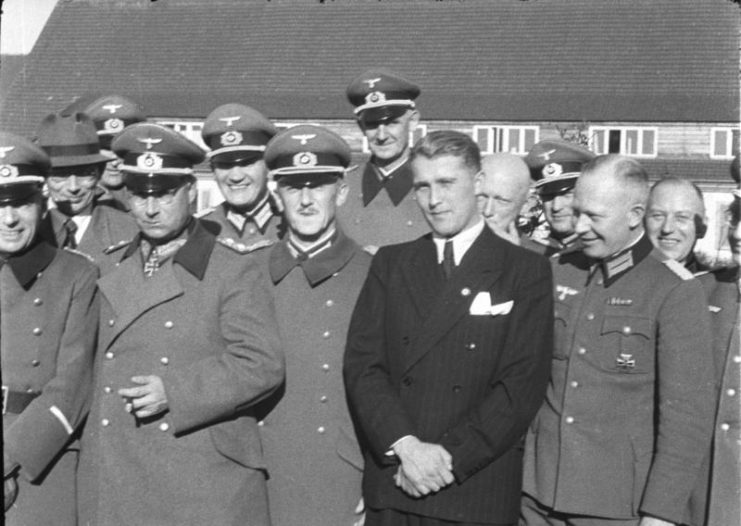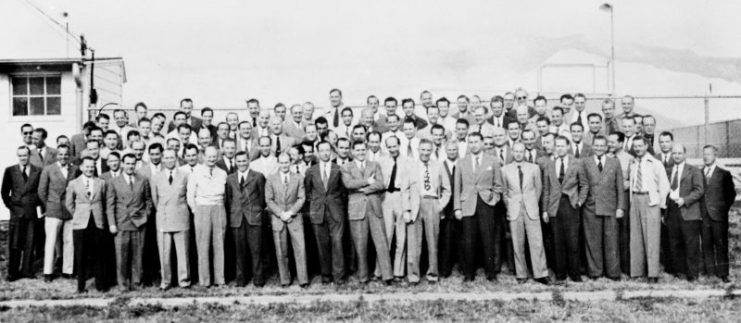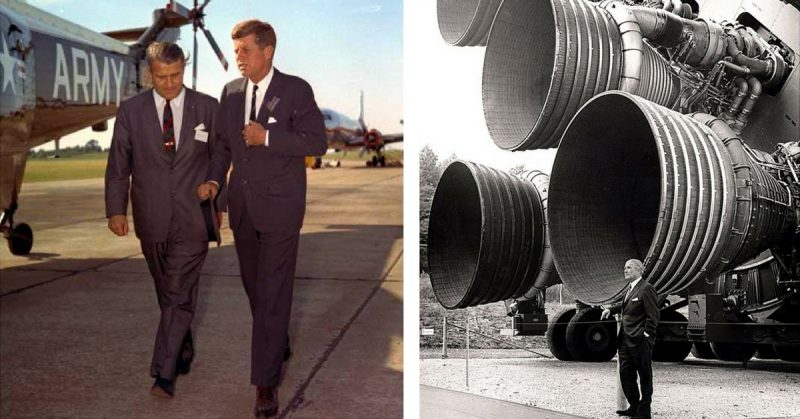During World War II, the Nazi rocket development program was led by one Dr. Werner von Braun. He was the man who designed the V-2 rocket that terrorised and killed over 2,000 people in London.
However, when he was captured by the Allies at the end of the war, he was not put on trial like many of the other leading figures of the Nazi establishment. Instead, he was whisked away to the USA to start a new life with the American rocket program. With his help, the US was able to beat the Soviets in the Space Race – Operation Paperclip was in full swing
In the early 50s, von Braun submitted 17 drawings that were used in Collier’s Magazine’s series “Man Will Conquer Space Soon!” from 1952 to 1954.
The illustrators at the magazine used the detailed drawings, graphs, calculations, and letters submitted by von Braun to prepare technically accurate drawings of the spacecraft that were soon to be sent into space.

Included in the drawings is a pencil illustration of a ship landing on the moon along with a cross-section of his proposed lunar lander.
The magazine called von Braun the top rocket expert in the world. According to an editorial in the magazine, space exploration would be accomplished in the next 25 years, thereby bringing scientists’ dreams of the last century to fruition.
In fact, it took less than 20 years to put a man on the moon. In 1969, Neil Armstrong, Buzz Aldrin, and Michael Collins took off in a Saturn V rocket designed by von Braun and completed a successful 8-day mission to place the first men on the moon.
In 1975, von Braun was awarded the National Medal of Science in recognition of his unequaled contribution to the US space program.
This archive of documents is going to auction for $100,000. RR Auctions is selling the collection of papers. A spokesman for the auction company said that the Collier’s series brought von Braun’s vision of space travel to the public. After the magazine series, von Braun was sought after for television and radio appearances to discuss the topic of space travel.

Walt Disney recruited von Braun to serve as a technical advisor for three made-for-TV films about exploring space released between 1955 and 1957. The films introduced much of the American public to the concept of space travel.
It was the first time that the US public had been given a realistic vision of space exploration, one that was rooted in scientific fact and was articulated by the father of the Space Age himself.
Von Braun had developed the V-2 rocket at the Peenemünde research base in the Baltic. He used slave labor to complete the work on the rocket.
In 1945, von Braun recognized that the Germans were not going to be able to win the war. He then plotted with the Americans to arrange his surrender along with 500 of his team of scientists. After he was captured by the Americans, he was transferred to the US along with his team of rocket scientists as part of Operation Paperclip.

Von Braun began his post-war career working for the US Army on their ballistic missile program. There, he developed the rockets that carried the Army’s first space satellite, Explorer 1.
Later, von Braun was appointed the director of the Marshall Space Flight Center. There, he was the chief architect of the Saturn V super heavy-lift vehicle that sent the Apollo spacecraft to the moon. Von Braun died in 1977 at the age of 65.
